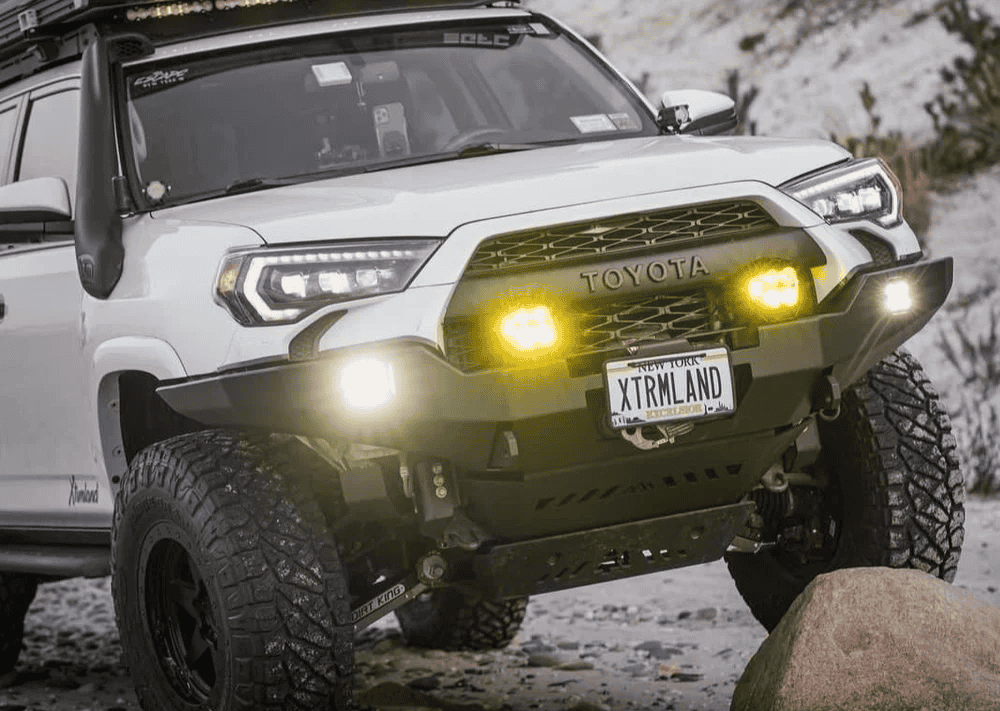Overland Vehicles

An overland awning turns your parking spot into useful living space. It creates shade when the sun beats down and sheds rain so you can cook, sort gear, or relax without retreating to the cabin. Think of it as a porch for your vehicle that deploys in a minute and packs into a slim case.
The simplest style pulls straight out from the roof line to form a rectangle of coverage. A wing style wraps around the side and rear in an arc, often near two hundred seventy degrees, to protect the tailgate zone. Both styles can be freestanding for a moment, but poles and guy lines are your insurance against gusts.
A car camping canopy can add walls to block sideways rain or curious breezes. Zip on one panel for a windward barrier or build a full room for privacy. In warm climates, mesh panels deter insects while still breathing.
Start with footprint. A compact crossover pairs well with a six by eight foot awning. Full size trucks and tall adventure vans benefit from longer and deeper coverage. The wing style shades the rear hatch, which is handy for meal prep or changing layers.
Measure the height of your roof rails to estimate pole length. Short vehicles need poles that collapse small, while taller rigs appreciate added reach. If you expect two chairs and a camp table, aim for a rectangle that gives walk space around your gear.
Look for durable fabric. Polycotton ripstop resists heat and flapping noise while blocking more sun. Coated polyester dries quickly and weighs less. UV ratings and waterproof coatings matter in high sun and frequent rain. Heavier fabrics damp vibration and wear better on long roads.
Hardware tells the long term story. Aluminum poles balance strength and weight, while reinforced hinge joints keep wing sections stable. Quality zippers and double stitching reduce failure points when winds arrive.
Selection comes down to how you camp, not what looks cool on a trailhead. If you cook at the rear hatch, a wing style earns its keep. If you roll into tight trailhead spaces, a straight pull out avoids sticking beyond the side mirror. Urban parking also favors slim profiles.
Match the awning case length to your roof bar spread. Too short and you lose support. Too long and the case can overhang unsupported areas. Brackets should bolt to factory rails or purpose built crossbars without flex.
Wind has a louder voice than rain. A large panel becomes a sail if not anchored. In breezy areas, smaller coverage with tight guy lines can be more comfortable than a giant canopy that requires constant attention. Keep sand stakes or snow stakes that suit where you travel.
A car camping canopy accessory adds function beyond shade. Solid walls hold heat near a portable heater and block drifting rain. Mesh walls keep airflow alive in muggy regions. Annex rooms create a quick changing area beside the rear door.
Practice at home. Time yourself and learn the order. A common flow is simple and repeatable:
In storms, lower the outer poles to reduce lift. Consider a storm strap over the fabric to the far side stakes. At night, add reflective cord so nobody trips. Clip a small light to a pole for a simple kitchen lamp.
A dialed awning depends on solid mounts, clean cable routing for lights, and hardware that fits your roof layout. If your build plans include roof racks, traction boards, or a solar array, design the whole system once so the awning opens freely and clears hatch doors.
When your trip list includes desert heat, coastal mist, and mountain wind, a custom approach saves hassle. The team behind the Overland Rigs lineup understands how shade, storage, and recovery gear need to coexist without rattles or sag. For complex roof plans, a custom overland upfit ensures brackets land on strong points, poles stow securely, and canopy walls zip on without blocking doors or ladders.
If you are deciding between a straight pull out and a wraparound design, think through your daily rhythm. Do you cook under the hatch, or do you face the view from the side doors. The right choice is the one that supports your habits and holds up to your weather. Curious what that looks like on a finished rig. See how we think, build, and support owners at Why Choose OZK Customs.
A properly integrated awning for car camping should feel seamless. It should deploy smoothly, drain properly, and ride quietly on the highway. Add a car camping canopy when conditions change, roll it away when the sky clears, and enjoy the extra living room your vehicle just gained.
Looking to combine an overland awning with roof storage, scene lighting, or a rear kitchen. Share your travel style and goals. We will map the roof, select proven hardware, and install a system that makes shade simple, sturdy, and fast.
— Explore more:
Ready for a rig that sets shade in minutes and rides quiet on the highway? Tell us how you travel and we will design, mount, and dial in your overland awning with the right brackets, lighting, and weather panels. Share your trip plan and let OZK Customs turn it into a capable, clean install.
ADDRESS:
6159 E Huntsville Rd, Fayetteville, AR 72701
PHONE:
(479) 326-9200
EMAIL:
info@ozkvans.com